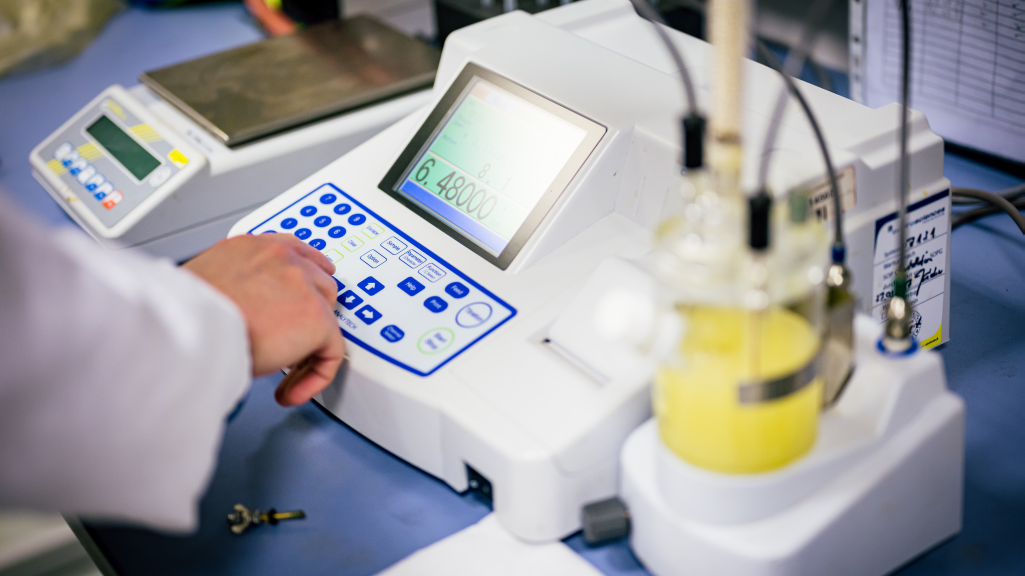-
Impulses
- Impulses overview
-
Transformer manufacturers
- South America's champions of the energy transition
- Traction Transformers – Future on the Rail
- Time of the giants: XXL transformers for more power
- "Reinhausen is ready to deliver!"
- Oversized de-energized tap-changers
- The most powerful transformers in the world for a 1,100 kV HVDC line in China
- "We are in a growth market with the VRDT"
- Digitalization turnaround: GANZ Intelligent Solutions relies on cooperation with MR
- "Transitioning to a solution provider presents a major opportunity for transformer manufacturers – and digitalization can help!"
-
Digitalization
- How AI can lend a hand
- myReinhausen: MR's central digital customer platform
- Why data centers (may) never fail
- Automation? (Cyber-) Secure!
- Globally unique: MESSKO® MTRAB® dehydrating breather communicates via cell phone app
- Remote Solutions: Professional help from a distance
- "Digitalization of the power grids will only work with comprehensive security measures"
- Why are you digitizing your transformers? Three questions for Rúnar Svavar Svavarsson.
- Six challenges, six solutions – Intelligent sensors for safe transformers
-
Energy transition
- The VRDT is the ideal solution to solve voltage problems in our distribution grids
- Making transformers more sustainable
- 940 tons of power regulation
- Sunny prospects: Municipal solar storage devices
- Four reasons why regulated distribution grids are the future
- "The energy transition is taking place in the distribution grids"
- Five theses on the future of power grids
- Storage at all network levels
- Test systems for the energy revolution
- Climate change, energy revolution and the future of power grids?
- A new design for utility poles
-
Wind and solar power
- The North Sea as Europe's green power plant
- Sahara electricity - safe for the island
- Are wind farms the new power plants?
- Direct current at all grid levels
- The MSCDN plant – the new "power plant generator" for stable grids
- Clean power grid with high-frequency filters
- Weatherproof cable testing for offshore wind parks
- VRDTs for Australia's distribution grids
- Lifetime optimization
- Power supply in industry
- Globalization
- Impulses overview
-
Transformer manufacturers
- South America's champions of the energy transition
- Traction Transformers – Future on the Rail
- Time of the giants: XXL transformers for more power
- "Reinhausen is ready to deliver!"
- Oversized de-energized tap-changers
- The most powerful transformers in the world for a 1,100 kV HVDC line in China
- "We are in a growth market with the VRDT"
- Digitalization turnaround: GANZ Intelligent Solutions relies on cooperation with MR
- "Transitioning to a solution provider presents a major opportunity for transformer manufacturers – and digitalization can help!"
-
Digitalization
- How AI can lend a hand
- myReinhausen: MR's central digital customer platform
- Why data centers (may) never fail
- Automation? (Cyber-) Secure!
- Globally unique: MESSKO® MTRAB® dehydrating breather communicates via cell phone app
- Remote Solutions: Professional help from a distance
- "Digitalization of the power grids will only work with comprehensive security measures"
- Why are you digitizing your transformers? Three questions for Rúnar Svavar Svavarsson.
- Six challenges, six solutions – Intelligent sensors for safe transformers
-
Energy transition
- The VRDT is the ideal solution to solve voltage problems in our distribution grids
- Making transformers more sustainable
- 940 tons of power regulation
- Sunny prospects: Municipal solar storage devices
- Four reasons why regulated distribution grids are the future
- "The energy transition is taking place in the distribution grids"
- Five theses on the future of power grids
- Storage at all network levels
- Test systems for the energy revolution
- Climate change, energy revolution and the future of power grids?
- A new design for utility poles
-
Wind and solar power
- The North Sea as Europe's green power plant
- Sahara electricity - safe for the island
- Are wind farms the new power plants?
- Direct current at all grid levels
- The MSCDN plant – the new "power plant generator" for stable grids
- Clean power grid with high-frequency filters
- Weatherproof cable testing for offshore wind parks
- VRDTs for Australia's distribution grids
-
Lifetime optimization
-
Power supply in industry
-
Globalization
Impulses - Portfolio
-
Career
Career
-
Company
Company
Moisture Sensors for Power Transformers
How they work and why you need them
Moisture sensors are an essential accessory of any power transformer, as they help to prevent costly damage from corrosion and insulation failure. In order to prevent this, it is important to monitor the relative moisture level in power transformers and take action when necessary. This can include drying out the transformer, replacing damaged components, or implementing measures to prevent moisture accumulation. By doing so, power transformers can continue to operate safely and efficiently.
There are multiple devices available, with varying price points and capabilities. Which one should you buy? This article tries to give an overview.
The primary danger of moisture is its influence on the breakdown voltage of the insulating oil. Small amounts of water are enough to severly reduce the breakdown voltage. This is illustrated by the attached figure, which is based on a figure from the CIGRE Working Group A2.35 "Experiences in Service with new Insulating Liquid" technical brochure. It shows the influence of moisture on the breakdown voltage of a standardized test setup.
Please note that the figure corresponds to relative water contents. The absolute values (measured in ppm) can differ by a factor of 4 for the same relative moisture, depending on the type of insulating oil. It is therefore much easier to talk about relative moisture.
How low can oil breakdown voltage go before the situation becomes critical? This depends on the application and insulation system. Conservative transformer designs with higher safety margins can handle lower breakdown voltages.
As can be seen from the previous figure, breakdown voltages reach their lower plateau at around 80% moisture. Increasing the moisture further doesn't make any difference. In practice, 80% relative moisture means that immediate measures should be taken.
We also have to take into account the temperature dependency of relative moisture. When the temperature increases, more water can be dissolved. For a fixed water content inside the transformer tank, the relative moisture will be higher if the temperature is lower. If the relative moisture content climbs above 100%, free water is falling out of solution, corroding components and negating any insulating properties. This situation has to be avoided at all costs.
Therefore, if a constant temperature cannot be guaranteed (most transformers are outside, subjected to different ambient temperatures), a safety buffer has to be included. Rule of thumb: For no free water to appear at night, the relative moisture should stay below 70% during the day. This limit can be lower for desert locations (which have a more pronounced day-night temperature-cycle) and higher for rain forrest or coast locations.
To conclude: Depending on the thermal environment of the transformer, a relative moisture limit of 70% or 80% should be enforced. A suitable moisture sensor should cover at least this range. Luckily, this requirement is fulfilled by basically every sensor on the market.

We are here for you. Wherever you are.
Looking for the right contact partner?
Do you have a concern, but don't know whom you should contact? You will find that information in our contact overview. In the event of any technical disturbances, our 24/7 support is always at your disposal.
Welcome to myReinhausen
myReinhausen is MR's central, digital customer platform. On myReinhausen, customers can access customer-specific MR information as well as numerous free features related to the MR portfolio.
myReinhausenJoin Reinhausen family
Find your ideal job quickly!
Check our vacancies here. Apply today and contribute at the world market leader in energy technology keeping the energy supply stable in the future.





